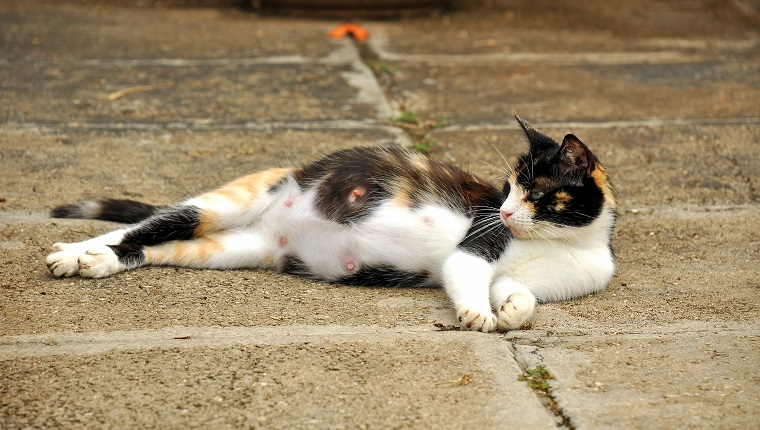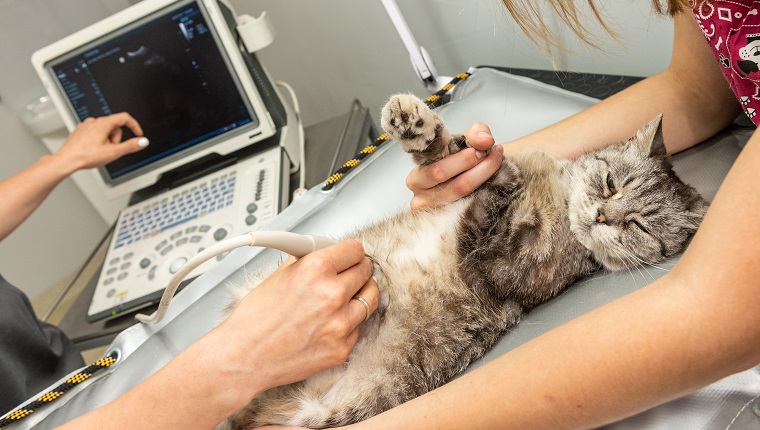Dystocia in cats is medical term that refers to a cat undergoing a difficult birthing process. It may result from a number of issues that relate to the fetus and the uterus, and it may be an issue that arises due to the mother or the kittens.
The condition can arise at any point during the labor process, and in some cases, it can be a life threatening condition. Additionally, certain breeds of cat have a higher predisposition to suffering from difficult birthing than others, including the Himalayan and Persian breeds.
If you see signs that your cat might be at risk of having a difficult birthing process, then you must consult your veterinarian for a proper diagnosis and course of treatment. Here’s what you should know about the symptoms, causes, and treatments of dystocia in cats.
Symptoms Of Dystocia In Cats
Dystocia in cats results in a wide range of different symptoms. Some of the most common symptoms include:
- Engaging in over 30 minutes of contractions without any success
- Bloody discharge
- Attempting to lick the area around the vulva during contractions
- Body temperature dropping below 99 degrees Fahrenheit for 24 hours without starting labor
- Waiting for a time period of over two hours between the delivery of kittens
Causes Of Dystocia In Cats

Dystocia in cats is caused by a range of issues, and they can be broadly separated into issues related to the mother and issues related to the fetus.
In cases that involve the mother, some of the most common causes are:
- Inflamed uterus
- Ruptured uterus
- Pelvis being too small
- Blood poisoning
- Abnormalities affecting the vulvar and vaginal vault
- Injury to the pelvic area
In cases that involve the fetus, some of the most common causes are:
- Fetus being in an abnormal position
- Fetus being too large
In general, the Himalayan and Persian breeds have a higher-than-normal likelihood of having a difficult birthing process.
Treatments For Dystocia In Cats
If you suspect that your cat might be developing dystocia, your veterinarian will want to carry out a full physical examination and ask detailed questions about your kitty’s history and lineage. Your vet will also conduct an examination of your cat’s cervix and vaginal canal areas.
Vets commonly use a range of tests including blood glucose, progesterone, and calcium when forming a diagnosis. They can also use X-rays and ultrasounds when confirming cases.
When it comes to treatment, manual help with the labor process is often key. Vets can successfully use a process known as digital manipulation to reposition kittens that might otherwise bring on a difficult birthing process. In some cases, vets can use a Cesarean section to deliver kittens.
In general, always talk to your vet ahead of labor if you find out that your cat or their breed has a history of difficult births.
Have you ever adopted a kitty who suffered from dystocia? What steps did your vet take to help your cat successfully give birth? Tell us all about it in the comments below.









